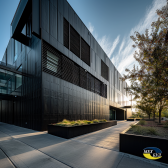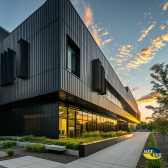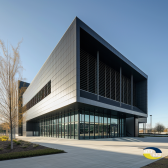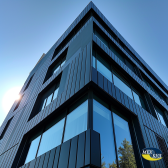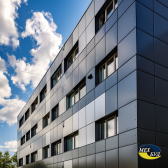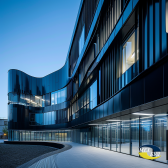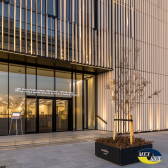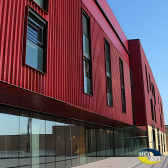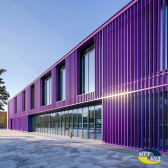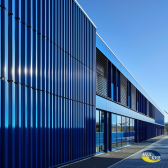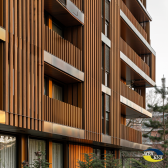2024 Facades: Choosing Contemporary Solutions
When selecting materials and technologies for facade finishing in 2024, it is necessary to consider a complex set of factors. Of course, the budget is paramount, but it is also important to take into account the facade’s resistance to loads and external factors, appearance, ease of maintenance, and so on. In essence, there are no revolutionary changes expected here — trends and tendencies that have been relevant in previous years will continue and become more pronounced.
MAJOR TRENDS IN FACADE FINISHING
Predicting which materials will be more frequently chosen for facade finishing in 2024 is a challenging task. The market is quite dynamic, with the emergence of new players and fluctuations in raw material prices (primarily polymer-coated metal and high-quality facade glass) making their mark. However, experts in this field note several important trends:
- Abandoning traditional technologies. Rendering facades is a method that is increasingly less used in the construction of new buildings or during major renovations. While the cost of such finishing is lower, wet facades are losing popularity in 2024. They have almost completely disappeared from the commercial sector. Even public buildings are more often finished using other technologies. The exception is older multi-apartment buildings, where the huge volume of uninsulated housing stock dictates finishing based on minimizing costs.

- Preference for modern materials. This could include metal cladding with polymer protective-decorative coatings, energy-efficient/multi-functional glass, or Cor-ten steel (a coating that mimics rust). In any case, the use of these materials in facade finishing will be justified, primarily from a functional point of view.
- Organic integration of design, functionality, and practicality. This is perhaps one of the main trends of recent years. It is no longer sufficient for a building facade to have low thermal conductivity or withstand regular rains. It is important that all elements of facade design create a cohesive picture, while the building itself is protected from heat loss, overheating on sunny days, and other climatic factors.
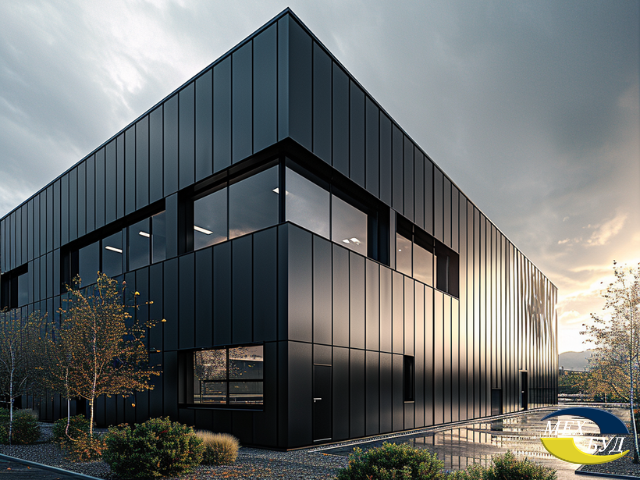
PRIVATE HOUSE FACADES
Private houses, primarily due to their small facade areas, can be finished with practically any materials in the coming year. However, it is worth paying attention to more modern solutions: yes, they may be more expensive, but the investment will pay off due to the longer service life of the facade finishing, as well as savings on heating/air conditioning.
The “wet” technology (insulation with polystyrene/mineral wool boards under plaster) has firmly established itself in the economy segment. Yes, it is still being used, and quite often — but this is precisely the option chosen due to a lack of funds. If finances allow, the choice is made in favor of a ventilated facade. And as cladding, the following are used:
- Vinyl (i.e., made of polyvinyl chloride, PVC) siding.
- Composite panels, including a polymer thermal insulation layer.
- Decking boards (both made of thermally treated wood and composite, from WPC).
- Metal siding, battens, as well as cassette panels made of steel or aluminum with a protective-decorative polymer coating.

MULTI-APARTMENT BUILDINGS AND PUBLIC BUILDINGS
When it comes to finishing the facades of multi-apartment buildings, as we’ve emphasized before, the priority becomes cost minimization. This also applies to many public buildings, especially in the budget sector: if the choice is between no reconstruction and plaster finishing with insulation, the latter option will be chosen.
But even in this sphere, the vector for 2023 and 2024 is clear:
- To improve energy efficiency, there’s a growing trend of abandoning plaster facades in favor of installing ventilated structures with mineral wool insulation boards (they provide natural ventilation retention and more effective fire protection).

- The main material for facade finishing is metal cassettes and panels. During mass reconstruction, facade cassettes in standard colors are used, but the technology allows for production in virtually any color from the RAL catalog.
- Other materials such as ceramic granite and artificial stone are used in facade design for public buildings. However, such solutions are appropriate only where stone cladding harmonizes with the rest of the architectural ensemble.

COMMERCIAL REAL ESTATE AND INDUSTRIAL SECTOR
Industrial facilities (manufacturing premises, warehouses, workshops, etc.) in 2024 (if we trust the forecasts of the construction market experts) will continue to undergo active reconstruction. In this regard, particular attention will be paid to facades — the expenses for their decoration can be quite significant, but they should be viewed as a capital investment. There are no major innovations planned for this segment in 2024 — except perhaps a noticeable increase in the popularity of Cor-ten coating.
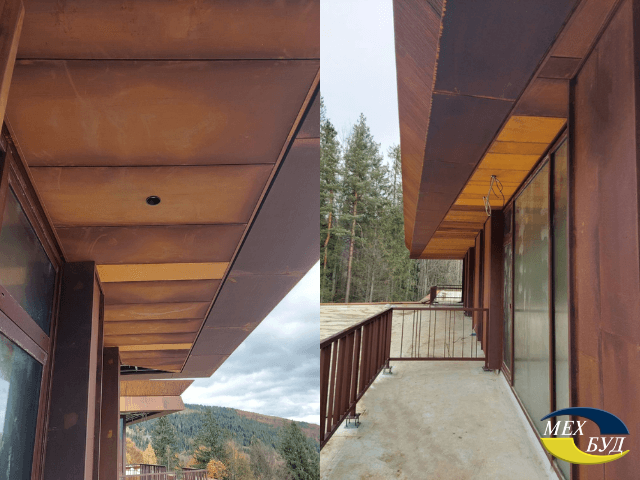
On the other hand, the commercial sector is a different story. This is because it includes a wide variety of buildings, ranging from office and shopping centers to parking lots, cafes, and restaurants. The most relevant solutions for this industry will be:
- Rack facades are an indispensable hit in 2024. Due to their versatility, they can be used for both private houses and commercial properties. The advantages of this facade include: a variety of color solutions; easy installation; affordable price.
- Blinds facades. The use of facade panels with diagonally arranged elements allows for maintaining natural lighting while protecting the facade from direct sunlight. Louvered facades have been on the market for quite some time (by modern standards), but in 2024, experts predict their increased popularity in office construction and in the finishing of such objects as parking lots or garages.
- Metal panel facades. Essentially a universal solution for almost any commercial property. Metal panels with polymer coating are used both individually and in combination with glass panels. In both cases, behind the cladding, you can conceal utilities and a layer of thermal insulation materials.
- Glass facades. This trend has remained unchanged since the production of glass durable enough for facade decoration began. In 2024, the proportion of glazed facades will gradually decrease, not due to inefficiency or lack of attractiveness but primarily due to the growing popularity of alternatives. The most popular solutions include the use of tinted or mirrored glass, multifunctional glass (which acts as energy-efficient in winter and sun-shielding in summer). The use of glass with variable transparency (already on the market) may be possible — but they won’t become popular until 5-10 years later because their current price is very high.
IN CONCLUSION
2024 is unlikely to be a landmark year for the development of the facade industry — rather, it can be seen as the development and deepening of already established trends. Nevertheless, the main recommendation from market experts will be the gradual abandonment of outdated technologies in favor of new materials. Yes, expenses for facade finishing may increase (though not always significantly) — but the lifespan of the building will increase. And there’s no need to talk about the design advantages of such facades — glass, clad with metal cassettes or louvered panels!

